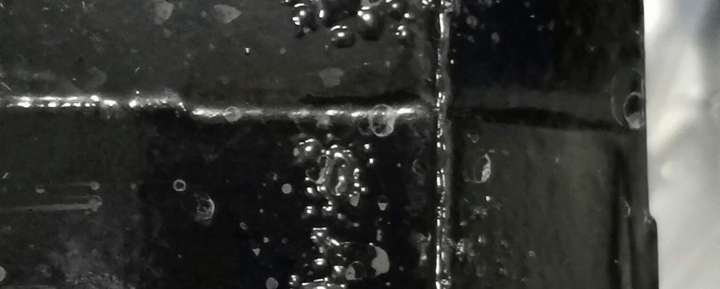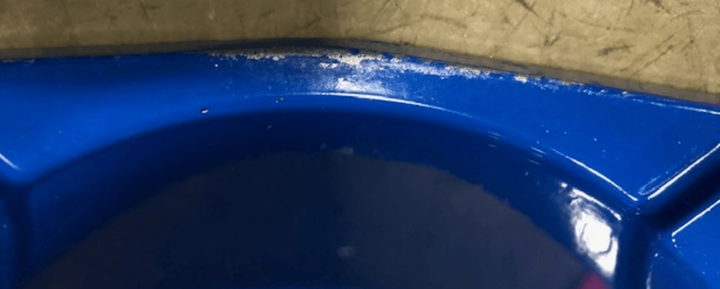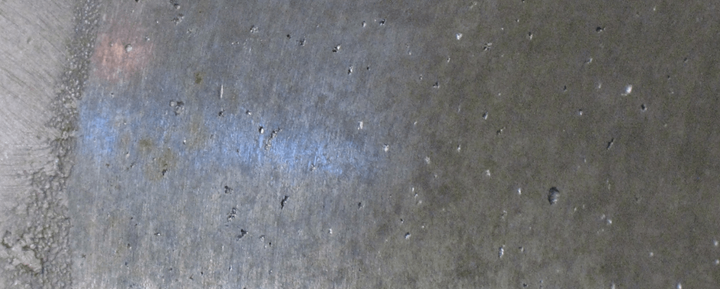When to Perform Vacuum Impregnation on Parts
Andy Marin from Godfrey and Wing says the general rule is that vacuum impregnation should be done before any surface finishes.
Q: Should vacuum impregnation be done before or after finishing?
A: Powder coat, paint, chromate conversion and anodizing are common finishes applied to die cast parts to improve their performance or appearance. In some die casting applications, components must also be pressure tight to hold pressurized fluid or gases. Companies use vacuum impregnation to meet these requirements by sealing the internal leak paths without impacting any other features of the casting.
The general rule is that vacuum impregnation should be done before any surface finishes. This will seal the porosity and eliminate any failure mode that could develop from outgassing, chemical compatibility or bleedout of pretreatments. Below are examples of failure modes that can occur if impregnation is done after the finish is applied.
Paint: The painted part will be exposed to sealant as well as certain minerals and alkalis in the water. The sealant can react with paint and degrade the quality of paint adhesion with the part surface. During impregnation, the painted part is heating to 195°F in hot water. The water or residual minerals in the water may leave water spots or, in the worst case, alter the color hue or degrade the finish (Image 1).

Image 1: The water or residual minerals in the water may leave water spots or, in the worst case, alter the color hue or degrade the finish.
Chemical: Many chemical finishes require aggressive liquid pretreatments for the finish to bond to the casting surfaces. These pretreatments may penetrate the near-surface porosity and remain in the pore even after the finish is completed. During the impregnation process, the vacuum will pull these chemicals from the porosity and into the finish, which may lead to corrosion and a defect known as “blooming.”
Chromate: If a chromate finish is applied to a part prior to impregnation, the heat required to cure the vacuum impregnation sealant (195°F) will degrade the quality of the coating. This will lead to a premature coating failure and cause part oxidation. Regardless of the type of finish, the part can be damaged or scratched from handling and processing (Image 2).

Image 2: If not properly fixtured, the parts can shift during the impregnation process and become damaged or scratched.
Powder: Vacuum impregnation eliminates powder coating outgassing. It not only seals the porosity, but may prevent cosmetic defects in powder coating. If not sealed, the pores would otherwise hold air. This air may expand and outgas during the curing stage. The air escapes through the powder, causing holes or bubbles (called pin holes) in the finish (Image 3). These pinholes are not only unattractive, they also allow in moisture and cause corrosion to damage the part. Vacuum impregnation prevents this issue by removing the air and filling the porosity with sealant.

Image 3: If not sealed, the pores would otherwise hold air. This air may expand and outgas during the curing stage, causing pin holes.
If parts are machined after finishing, then the parts should be sealed after machining. This is because a machine tool may expose or open porosity when it cuts into the part's surface.
The new interconnected porosity will create a leak path. The leak path will cause fluids and gases to leak from the casting, causing it to be nonconforming and, in many cases, unusable. Unfortunately, this occurs precisely at the wrong time, as the nonconforming part has already been manufactured. All the value has been added to the nonconforming part.
In summary, vacuum impregnation is the most effective way to seal casting porosity, but it must be performed at the correct stage of the production process. Performing vacuum impregnation prior to finishing will ensure that all leak paths are sealed, while safeguarding and enhancing the quality of the final finish.
Andy Marin is the marketing coordinator for Godfrey & Wing. Visit godfreywing.com.
Related Content
Masking Solutions Provider CFS Dramatically Expands Capabilities and Capacity
Custom Fabrication & Supplies (CFS) completed a new plant expansion packing 10 times the capacity into twice the space. It dramatically enhances the supplier’s custom capabilities to provide extremely precise and cost-effective masking solutions.
Read MoreZinc Phosphate: Questions and Answers
Our experts share specific questions about zinc phosphate and pretreatment
Read MoreProducts Finishing Reveals 2024 Qualifying Top Shops
PF reveals the qualifying shops in its annual Top Shops Benchmarking Survey — a program designed to offer shops insights into their overall performance in the industry.
Read MoreConveyors and Paint Systems
Choosing the right conveyor system, coating technology, and ancillary equipment.
Read MoreRead Next
Episode 45: An Interview with Chandler Mancuso, MacDermid Envio Solutions
Chandler Mancuso, technical director with MacDermid Envio discusses updating your wastewater treatment system and implementing materials recycling solutions to increase efficiencies, control costs and reduce environmental impact.
Read MoreA ‘Clean’ Agenda Offers Unique Presentations in Chicago
The 2024 Parts Cleaning Conference, co-located with the International Manufacturing Technology Show, includes presentations by several speakers who are new to the conference and topics that have not been covered in past editions of this event.
Read MoreEducation Bringing Cleaning to Machining
Debuting new speakers and cleaning technology content during this half-day workshop co-located with IMTS 2024.
Read More

























